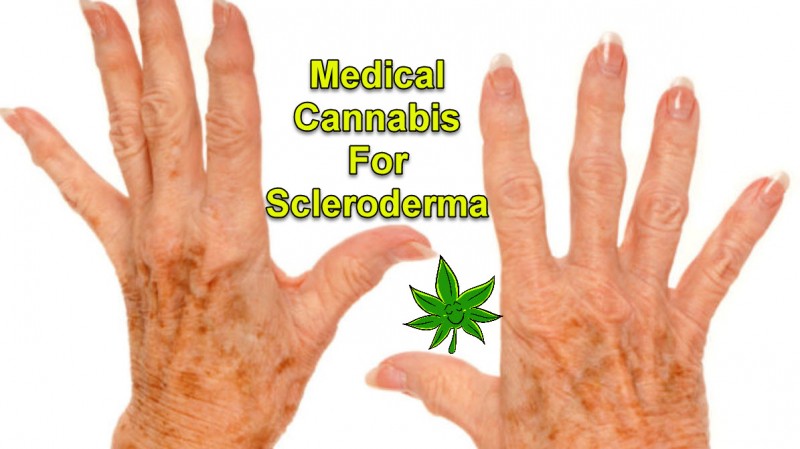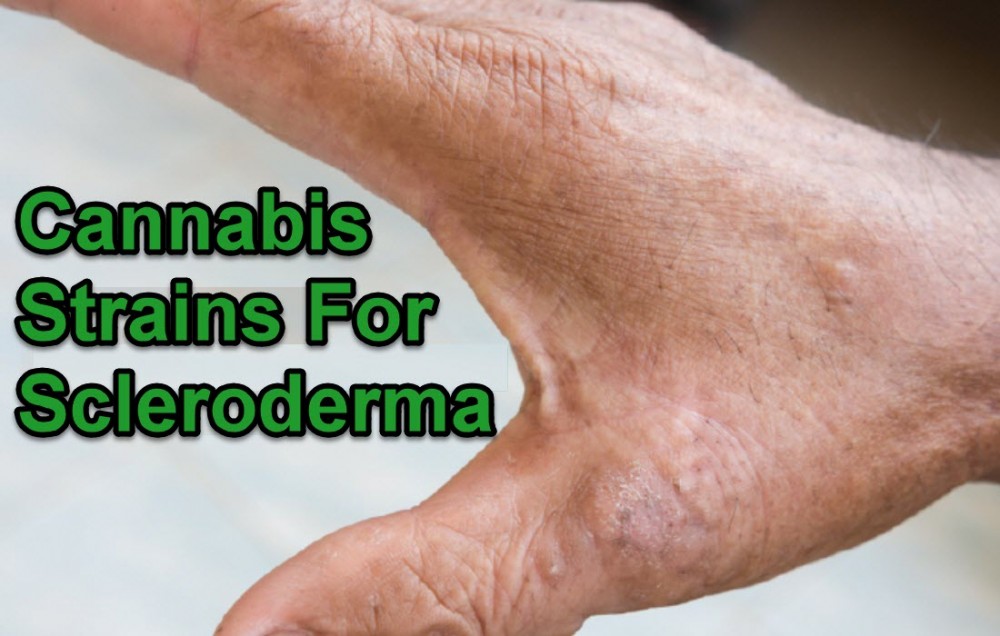Cannabis For Scleroderma
Medical Cannabis for Scleroderma? from CannabisNet on Vimeo.
Scleroderma is a rare autoimmune disorder that affects the connective tissue. It is characterized by thick skin, blood vessel conditions, spontaneous scarring, overactive immune system, and inflammation.
The primary symptom of scleroderma is fibrosis, or the formation of scar tissue on the skin. It can occur externally in visible areas, or internally in organs like the kidney, bowels, lungs, and blood vessels. Other symptoms include swelling, redness, tenderness, pain, and itching which usually affects the feet, fingers, neck, and face; causing limited motion. Common cases of scleroderma involve the esophagus, which leads to heartburn.
Depending on the severity, scleroderma may be classified as either localized systemic; the latter referring to scleroderma which affects internal organs. Localized scleroderma may be further classified into morphea or linear scleroderma, while systemic scleroderma can be further classified into limited or diffuse scleroderma. Patients with systemic scleroderma may also suffer from other diseases of the connective tissue such as systemic lupus erythematosus, rheumatoid arthritis, and polymyositis.
Scleroderma is not infectious, malignant, contagious, or cancerous. However, each case varies; some individuals may have more life-threatening cases of scleroderma than others. The severity of this condition depends on which part of the body is affected, and how badly it is affected. Mild cases may escalate into a more serious case without proper treatment, which is necessary to reduce the symptoms as well as the chances for it to cause irreversible damage. If left untreated, scleroderma may lead to cancer, heart failure, kidney failure, high blood pressure in the lungs, difficulty breathing, and malabsorption of nutrients.
Statistics say that around 300,000 Americans are living with scleroderma, and around a third of them have systemic scleroderma. Treatment will depend on the body parts that are affected, but most commonly, doctors recommend aggressive medications to prevent kidney failure through the use of blood pressure medications such as angiotensin converting enzyme (ACE) drugs. Low doses of aspirin may also be prescribed for the prevention of blood clots. There are dozens of potential pharmaceutical drugs that are prescribed to treat varying cases of scleroderma, but many of these drugs have harmful side effects.
How Cannabis Can Help
The many healing properties of cannabis can help prevent complications that may arise from scleroderma, while speeding up treatment. While human studies analyzing the impact of cannabis on scleroderma are scarce, the research we have is promising.
In a 2016 study analyzing the role of cannabinoids in autoimmune diseases, researchers found that cannabinoids play a role in the immune system thanks to its immunosuppressive properties. Cannabinoids are beneficial in preventing the spread of leucocytes while inducing cell death (apoptosis); they also reduce the production of cytokines which increase inflammation. The scientists concluded that cannabinoids have an anti-fibrotic effect in cases of scleroderma.
In another study conducted by Spanish researchers, scientists developed a cannabinoid-based drug that stimulates 2 receptors that are thought to be associated with the development of fibrosis in scleroderma cases. The drug, called VCE-004.8, was shown to be effective in inhibiting the formation of myofibroblasts, which cause the spread of fibrosis, when tested in laboratory conditions. VCE-004.8 was also successful in stopping fibrotic changes in animal models of dermal fibrosis.
Cannabis can also help alleviate other scleroderma symptoms such as:
Inflammation: The two primary cannabinoids in cannabis, THC and CBD, have been found to be effective in reducing inflammation throughout the body. Cannabis also contains beta-carophyllene, another compound that fights inflammation.
Pain: Patients with mild or severe forms of scleroderma may suffer from pain in different parts of the body. This condition can also result in painful joints. Cannabis is a well-known analgesic which has no side effects; it has been used for thousands of years to treat different forms of pain from mild to chronic.
Insomnia: Scleroderma can make it difficult to get proper sleep because of the other symptoms that it causes. However, getting sleep is important to speed up healing. Cannabis, especially the indica varieties, can naturally induce sleep while relaxing body and mind for peaceful slumber.
Breathing problems: Cannabis is used to treat asthma, since it can relax the airways. This is beneficial for patients wherein scleroderma affects the lungs and esophagus, making it difficult to breathe. Cannabis can also aid in the improvement of lung health, and preventing lung cancer.
Gastrointestinal problems: Scleroderma may lead to a host of gastrointestinal problems if it affects this part of the body. Cannabis has been shown to be useful in treating numerous stomach conditions including appetite loss, bowel disease, irritable bowel syndrome, and much more.
Have you used cannabis to treat scleroderma? Share your experience with us in the comments below!
Medical Marijuana For Scleroderma from CannabisNet on Vimeo.
OTHER STORIES YOU MAY ENJOY...
CANNABIS STRAINS FOR SCLERODERMA, CLICK HERE.
OR..
SKIN CANCER AND CANNABIS OIL IDEAS, CLICK HERE.








